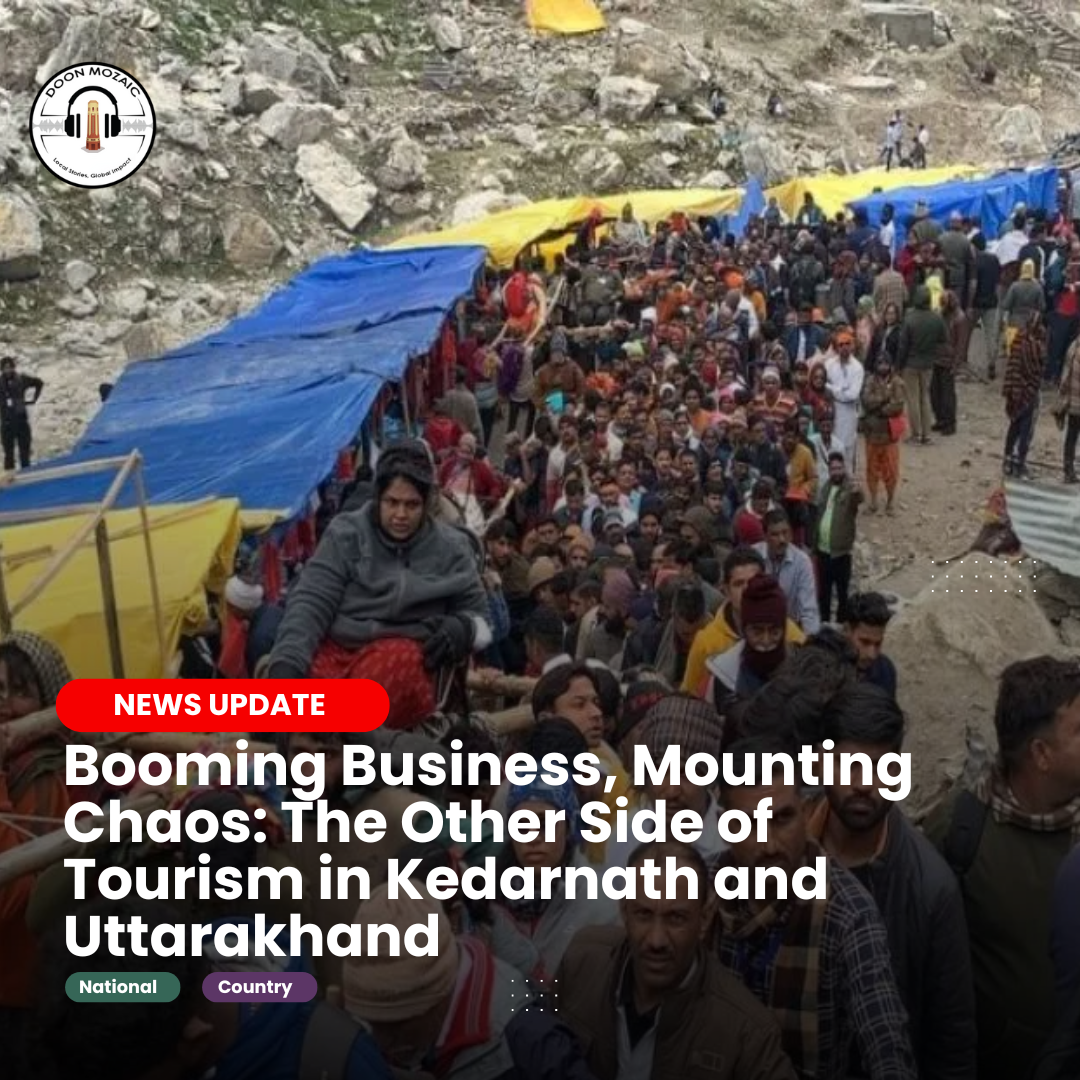The Char Dham Yatra—encompassing the four hallowed shrines of Yamunotri, Gangotri, Kedarnath, and Badrinath—has evolved into one of India’s largest annual pilgrimages, drawing over 21.5 lakh devotees since late April. During the 48-day window for Kedarnath alone (May 2–June 18), more than 11.4 lakh pilgrims completed the arduous 20-kilometer trek or opted for assisted transport. Horse and mule operators earned roughly ₹67 crore, ferrying 2.27 lakh pilgrims through the rugged Himalayan passes, while eight helicopter companies, operating from nine helipads, generated ₹60 crore by flying nearly 50,000 devotees to the shrine. Taxi shuttle services between Sonprayag and Gaurikund accounted for another ₹14 crore, and over 2,000 hotels, restaurants, and tented accommodations recorded business worth about ₹150 crore. Altogether, the Kedarnath sector alone has contributed nearly ₹300 crore to the local economy, reinforcing the Char Dham’s position as the backbone of Uttarakhand’s service-sector GDP.

Yet this surge in pilgrimage activity has come at a steep cost in terms of safety and sustainability. Unpredictable pre-monsoon rains triggered fatal landslides near Junglechatti and elsewhere on the trekking route, killing at least four pilgrims in separate incidents and compelling authorities to suspend foot-traffic beyond Sonprayag. On June 15, an Aryan Aviation helicopter crashed at Gauri Mai Khark amid dense fog and alleged slot violations, tragically claiming seven lives—including a two-year-old child—and prompting the DGCA to halt Kedarnath air services for two days. Meanwhile, altitude-related health emergencies have also soared: official data show 83 deaths in the first 36 days of the journey, 74 of which were due to medical complications such as acute mountain sickness and cardiac arrest. In 2024’s entire 192-day Char Dham season, a staggering 246 pilgrims lost their lives, underscoring the pressing need for medical screening and emergency preparedness at high-altitude outposts.
Beyond human safety, the pilgrimage’s rapid growth is testing Uttarakhand’s infrastructure and environment. Villages along the trails struggle with accommodation shortages, spurring unregulated tent settlements and sanitation lapses despite fines. Tens of tons of plastic and food waste accumulate daily, threatening fragile ecosystems. Narrow mountain roads choke under the weight of increased taxi and shuttle traffic, heightening the risk of vehicular accidents and accelerating soil erosion. Even isolated law-and-order incidents—such as the viral clash between parking staff and pilgrims at Sitapur—reveal rising tensions as locals and visitors vie for limited resources and space.
Addressing these challenges demands a multifaceted approach. Real-time weather and landslide warning systems must be deployed along vulnerable trail segments, and helicopter slot allocations should integrate live DGCA monitoring to prevent unauthorized takeoffs. Mandatory health screenings for elderly or vulnerable pilgrims, coupled with expanded high-altitude first-aid posts equipped for telemedicine, can help avert fatal medical emergencies. Environmental stewardship initiatives—like strict “zero-plastic” zones, biodegradable packaging mandates, and crowd caps based on carrying-capacity studies—are essential to preserve the Himalayan ecosystem. Training and certification programs for pony-and-mule operators, dandi-kandi carriers, and transport vendors will enhance both human and animal welfare.
Crucially, enforcement and accountability must move beyond paper promises. Operators who flout Standard Operating Procedures—whether in aviation, land transport, or hospitality—require swift, transparent penalties to deter negligence. Public dashboards tracking incidents, compliance rates, and penalties can build trust among pilgrims and local communities alike. Only through data-driven policies, technological interventions, and genuine stakeholder engagement can Uttarakhand ensure that the Char Dham Yatra remains a spiritually uplifting, economically vital, and ecologically sustainable journey for generations to come.
Discover more from The Doon Mozaic
Subscribe to get the latest posts sent to your email.




One thought on “Booming Business, Mounting Chaos: The Other Side of Tourism in Kedarnath and Uttarakhand”